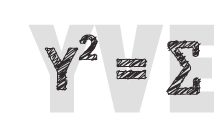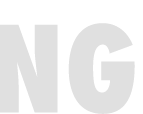| |

My favorite college teachers were always those that could impart true excitement about the material. Their excitement lured me in and got me interested in topics that had not even been on my radar. Using these teachers as examples, my teaching style is one part performance and one part coaching. Through animated content delivery, the performance aspect, I hope to get students interested in and excited about even the least glamorous sociological concepts and issues. Through guided discussions, carefully designed exercises, and individualized feedback, the coaching aspect, I hope to guide students as they learn new ways to see and analyze society. Some of the techniques I use include providing real world examples and applications, integrating technology into the classroom, catalyzing lively discussions, and providing experiential learning opportunities that allow students to use what they have learned in a meaningful way.
My teaching style parallels my teaching philosophy, which emphasizes discovery, critical thinking, real-world application, and social change. Consequently, my goals for student learning are: first, to introduce students who are new to sociology to the core concepts and perspectives of the discipline; second, to help students see the sociological everywhere; third, to encourage students to examine society and current events with a critical eye using the tools and methods of sociology; fourth, to engage students in the practice of social justice and social change. Whenever possible, I give students the opportunity to practice what they are learning and effect social change by incorporating community engaged learning practices into my teaching. For more on how I use community engagement as a pedagogical method go to the Community Engagement page.
      
|
| |

Courses

I have taught the following undergraduate courses:
Core Courses
- Introduction to Sociology1,2
- Social Problems1,2
- Data and Society2
- Social Statistics/Introduction to Statistics1,2
- Research Methods
Elective Courses
- Gender in Society2
- Power, Inequality, and Globalization1
- Global Social Structure2
- Population and Society1
1Course taught in-person and online.
2Community-engaged learning course.
Course Descriptions

Introduction to Sociology
This course is an introduction to the study of Sociology that is designed to help students develop their sociological imaginations. It introduces the core concepts and principles sociologists use to understand and evaluate society. It focuses on all aspects of society: culture; social interaction; institutions; group processes; deviance and social control; stratification, diversity, and inequality based on race, ethnicity, class, gender, etc.; and social stability and change.
Social Problems
This course is designed to prepare students to think critically and participate intelligently in public debates on contemporary social problems. Topics may include the causes and consequences of structural inequality, institutional and financial crises, sexual harassment and rape, illicit drug use, racism and hate crimes, unplanned population growth, terrorism, homelessness, residential and educational segregation, and environmental degradation.
Data and Society
Quantitative literacy is increasingly important in our world of information. The primary goal of this course is to learn about data and how it’s used. The course introduces basic concepts of statistical analysis and applies them to current events, pop culture, sports, and contemporary science. Over the semester, you will learn how to develop basic tools to analyze and visualize data, read and evaluate research claims, and report research findings in honest and ethical ways.
Social Statistics/Introduction to Statistics
The course introduces basic concepts of statistical analysis, both in theory (lectures) and practice (labs). The course begins with a discussion of descriptive statistics, including frequency distributions, graphs, and measures of central tendency and variability. Next, the course examines relationships between variables and measures of association, including bivariate regression and correlations. The course concludes with an introduction to inferential statistics, including t-tests, chi-square, ANOVA, and ordinary least squares regression.
Research Methods
This course introduces students to systematic methods that organize the research process and the multiple forms of research that it includes. The course explains the logic of research design, explores some common forms of data-gathering (such as interviews, surveys, observation, etc.), and links them to issues of data reporting. The course provides basic research skills for use to students as either original producers or critical consumers of social research.
Gender in Society
This course examines gender from institutional, interactional, and individual level perspectives. We will cover a brief history of the women’s movement and its implications within the United States. A sociological perspective will be used to understand contemporary gender issues, including the social construction of gender, the intersection of work and family, the social construction of masculinity and femininity, and gendered relationships.
Inequality, Power, and Globalization
This course addresses economic growth and development by looking into the causes and processes behind the development and "underdevelopment" of newly industrialized countries and low-income countries. Social and economic factors associated with growth and their effects on society are discussed. This course was also listed as Sociology of Economic Development.
Global Social Structure
Globalization plays a leading role in shaping the ever-changing global social structure. Global institutions are expanding (both in number and size) and growing increasingly complex. In this class we explore the process of globalization in order to better understand its meaning, temporality, and impacts on development, human wellbeing, and the environment and modern society in general.
Population and Society
Not only is the overall world population growing, the composition of the earth’s population is constantly changing. These changes exert powerful influences on society, impacting the well-being of people in many ways. For example, population growth and population change influence economic development, the natural environment, health care, and other important social phenomenon. This creates a need for studying and understanding population dynamics. This course is devoted to the study of demographic processes, their causes, and their consequences. We will review population trends across time and across cultures, learn how to empirically measure changes in the population, and discuss how these trends impact society, policy, and culture.
|


















